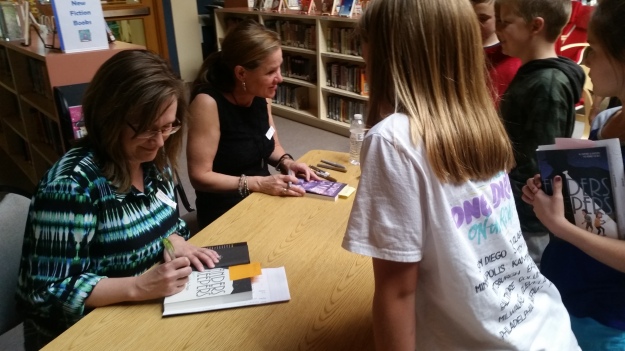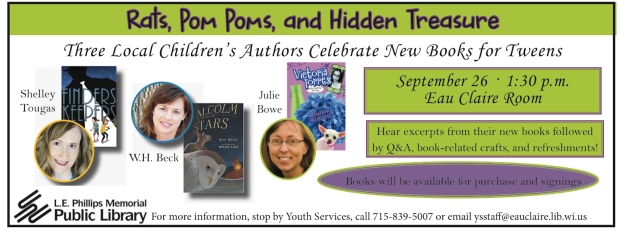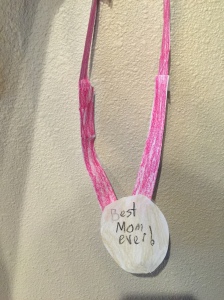Welcome to the Middle Grade Blog Party!
Author Lisa Lewis Tyre (Last in a Long Line of Rebels) is hosting a blog party featuring authors of middle-grade lit. We’ll be blogging about the writing life, the creative process, writing tips, and all things middle grade.
To get to Lisa’s blog and see the full menu of blog topics, click here.
For the party, I decided to write about my favorite activity – sleeping.
Sleep is not just the time for restoration. It’s a creative sweet spot, especially those bizarre moments when sleep intersects with our awakened state. That’s when you find yourself thinking about mundane things like did I turn off the garage lights? When’s my dentist appointment? Did I miss my dentist appointment? I think we’re out of milk! As you slowly slip from reality to sleep, you fall into strange thinking patterns. The thought about the dentist appointment twists and turns, and suddenly you’re at the store buying milk with your dentist who’s reminding you the garage light is still on, and, for a moment, you’re aware that sleep is intruding on your consciousness.
This is the sweet spot. You’re not exactly dreaming, but you’re definitely not awake.
It’s much like lucid dreaming, which is being in a complete dream state, becoming aware of the dream state, and changing it into a story, as though you’re directing a movie.
Bizarre? Not entirely. You can find a mountain of books, and even scientific journals, about lucid dreaming. Each year there’s a workshop in Hawaii that teaches lucid dreaming techniques. The workshop is run by sleep expert Steven LaBerge, who researched dream states at Stanford University. (The New York Times wrote about it here.)
It takes practice, but you can learn to tap that pre-dream state and capture your creativity when it’s most pure.
Go to bed thinking about your story. (This works with naps, too. What a great excuse to rest in the middle of the day!) Push away thoughts about milk and dentist appointments. Focus only on your story and your characters. As you fall asleep, hopefully you’ll notice your writer’s mind firing ideas.
It’s essential to keep a notebook next to your bed. If you return to awareness, you must jot down what occurred, even if it seems ridiculous. Later, when you’re writing, that crazy thought might trigger a thought that’s not so crazy or, perhaps, an idea for your next project.
Finding the sweet spot takes patience and practice. Most nights you won’t get there. But when you do, and when it works, it unleashes creativity.
Let’s address the obvious concerns.
I need to actually sleep when I sleep. This sounds like insomnia.
Trying to be semi-awake when you’re semi-asleep can interfere with your sleep patterns, especially at first. But you won’t know until you try. Make your first efforts during the weekend when you know you can grab an extra half hour of sleep.
About that notebook … I’ll wake up my partner by turning on a lamp.
There was a time when I could tell myself, hey, remember this idea in the morning, and I would. As I get older, that’s no longer the case. I once read a tip for improving nighttime memories without having to become fully awake so you can write notes. Take something from your nightstand – a box of Kleenex, for example, and throw it on the floor. Then you don’t have to wake up completely. When you get up in the morning and see the Kleenex, it’ll trigger your memory. I tried it, but Kleenex tossing didn’t work for me. My fiancé wanted to know why there was a box of Kleenex in the middle of the bedroom. So did I. All I knew was the box represented a memory, but the idea was lost.
My favorite writing tool is a “pilot’s pen.” When you press the pen on paper, the tip lights up so you can see what you’re writing. Your partner won’t even roll over. Here’s an example from Amazon.
I tried it, and the pre-dream state is bizarre rather than helpful.
Sometimes that’s the case. I was at a point in a story where I basically had my character backed in a corner, and I didn’t know how to get her out. In that dreamy state, I came up with what seemed like a great idea. The character could turn into a pickle! It was completely depressing to wake up and realize my brilliant idea wasn’t so brilliant. That’s okay. I unleashed the creative, idea-producing part of my brain. That’s an achievement. And eventually I came up with a solution that didn’t involve pickles.
I fall asleep the second my head hits the pillow.
Lucky you. As someone who suffers from insomnia, I’d trade this creative process for consistently getting uninterrupted sleep. Since I’ll never be that person who immediately sleeps, I’m happy to turn a negative into a positive. I consider it a turning-lemons-into-lemonade strategy.
This might be the strangest writing tip you’ve ever heard. That’s okay. Writing is strange. Writers are strange.
Take it from sleep expert LaBerge, who says, “Not all lucid dreams are useful but they all have a sense of wonder about them. If you must sleep through a third of your life, why should you sleep through your dreams, too?”
Read more about LaBerge here.
Goodnight and sleep (mostly) well.












